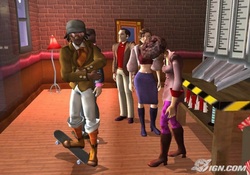Article Summary

Framing News Stories: The Role of Visual Imagery in Priming Racial Stereotypes written by Linus Abraham and Osei Appiah argues (a) that images can be used implicitly and subtly or proposition meanings that go beyond simply the information contained in the text in multi-modal modes of presentation; (b) that through this discursive form racial sub-text of meaning can be structured by juxtaposing implied racial images (in images/photographs) with particular explicit story contexts that are seemingly race neutral; and (c) that through this discursive process long-held stereotypes can be activated and primed (185). Images that may not be defamatory by themselves, through juxtaposition, allows for negative interpretations of different racial groups. Although the study follows in the tradition of past studies, previous studies have failed to test how implicit racial imagery helps prime Black cultural stereotypes and may contribute to contemporary forms of prejudice. The concept derives its discursive basis from the theory of multi-modal implies media representations that combine both verbal/written texts with visual images (186). Specifically, the implied racial subtext of meaning supplied through photographs will influence participant’s perceptions of how specific racial populations are affected by specific public policy issues (189). The authors tested 177 white undergraduates (ages 17-30 the median age 20) from large, public Midwestern university participated in this experiment. Sixty-two percent were female and 38 percent were male. The experiment investigated the effects of four different story conditions (i.e. no pictures, Black and White pictures, White pictures and Black pictures) on White participants’ perceptions of the extent to which each population (i.e., whites and Blacks) is affected by the public policy issue mentioned in the news story (190). The stimulus consists of two real news stories about real events (191). Although this study did not include measures that would directly elicit racial stereotypes, the finding provide evidence that White participants possess and activate Black cultural stereotypes as a way of understanding populations that are most affected by public policy issues even when there are no visual images available to more directly attribute to a certain population. This seems to be consistent with empirical studies that reveal that Whites show a consistent contemporary stereotype of Blacks that is highly negative (196).
How is this relevant to new media? It is relevant to academics who want to see if video games create the same effect. For instance, in Sims The Urbz when a black guy named Darius who dresses in hip hop clothing and raps on the corner street in the urban part of Sims, Detective Dan does not pay him any attention. However, when Darius travels over to a better neighborhood detective Dan's is seen standing near him writing something in his note pad. This article could be used to frame a research project on the priming of racial stereotypes in video games.
Reference
Abraham, Linus, and Osei Appiah. "Framing News Stories: The Role of Visual Imagery in Priming Racial Stereotypes." Howard Journal of Communication 17.3 (2006): 183-203. Print.
How is this relevant to new media? It is relevant to academics who want to see if video games create the same effect. For instance, in Sims The Urbz when a black guy named Darius who dresses in hip hop clothing and raps on the corner street in the urban part of Sims, Detective Dan does not pay him any attention. However, when Darius travels over to a better neighborhood detective Dan's is seen standing near him writing something in his note pad. This article could be used to frame a research project on the priming of racial stereotypes in video games.
Reference
Abraham, Linus, and Osei Appiah. "Framing News Stories: The Role of Visual Imagery in Priming Racial Stereotypes." Howard Journal of Communication 17.3 (2006): 183-203. Print.


